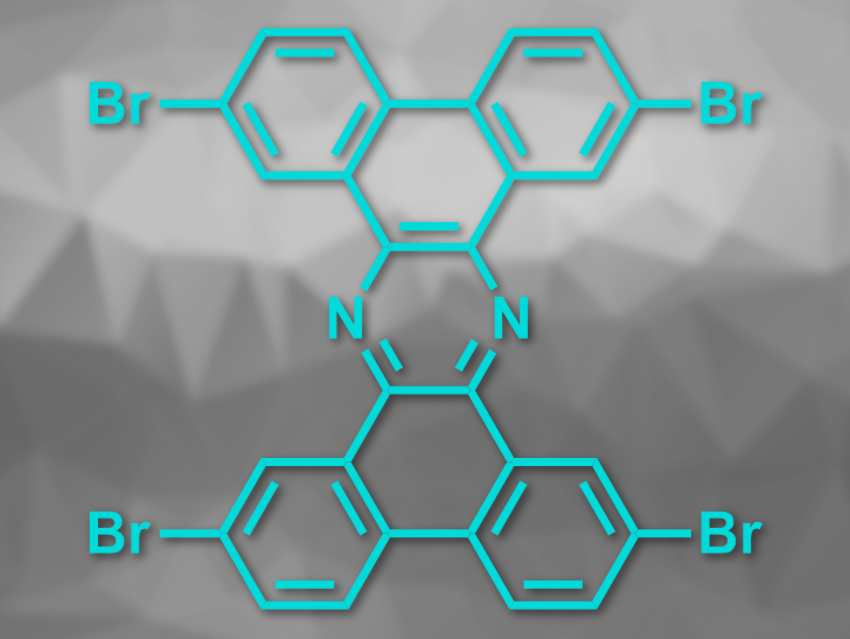Graphene nanoribbons (GNRs) are narrow strips of graphene. They have applications, e.g., in materials science or imaging. Doping with elements such as nitrogen, boron, or sulfur can be used to tune the properties of GNRs. During known bottom-up syntheses, these elements are usually included at the edges of the nanoribbons and rarely embedded within the structure. Introducing pores could also be useful to tailor the properties of GNRs for specific applications.
Shi-Xia Liu, University of Bern, Switzerland, Ernst Meyer, University of Basel, Switzerland, and colleagues have developed a bottom-up synthesis of porous, nitrogen-doped GNRs. The team used 2,7,11,16-tetrabromotetrabenzo[a,c,h,j]phenazine molecules (TBTBP, pictured above) as building blocks, which were connected via a silver-promoted Ullmann coupling. The synthesis was performed on an Ag(111) surface. The TBTBP precursor was deposited on the silver surface, which was then heated. The researchers observed the reaction using scanning tunneling microscopy (STM) and atomic force microscopy (AFM).
First, the precursor is debrominated and an Ag-bridged ribbon-shaped intermediate is formed from the building blocks (pictured below). Then, the organometallic intermediate is converted to the desired porous, nitrogen-doped GNRs. In the GNRs, the building blocks are connected by C–C single bonds and the nitrogen is embedded within the ribbons. The pores in the GNRs are evenly spaced and have a diameter of 4.6 Å, measured from N atom to N atom.

- Bottom-up Synthesis of Nitrogen-Doped Porous Graphene Nanoribbons,
Rémy Pawlak, Xunshan Liu, Silviya Ninova, Philipp D’Astolfo, Carl Drechsel, Sara Sangtarash, Robert Häner, Silvio Decurtins, Hatef Sadeghi, Colin J. Lambert, Ulrich Aschauer, Shi-Xia Liu, Ernst Meyer,
J. Am. Chem. Soc. 2020.
https://doi.org/10.1021/jacs.0c03946




![Synthesis of [c2]Daisy Chains via Mechanochemistry](https://www.chemistryviews.org/wp-content/uploads/2025/04/202504_RotaxanesWithSolidStateMechanochemistry-125x94.png)